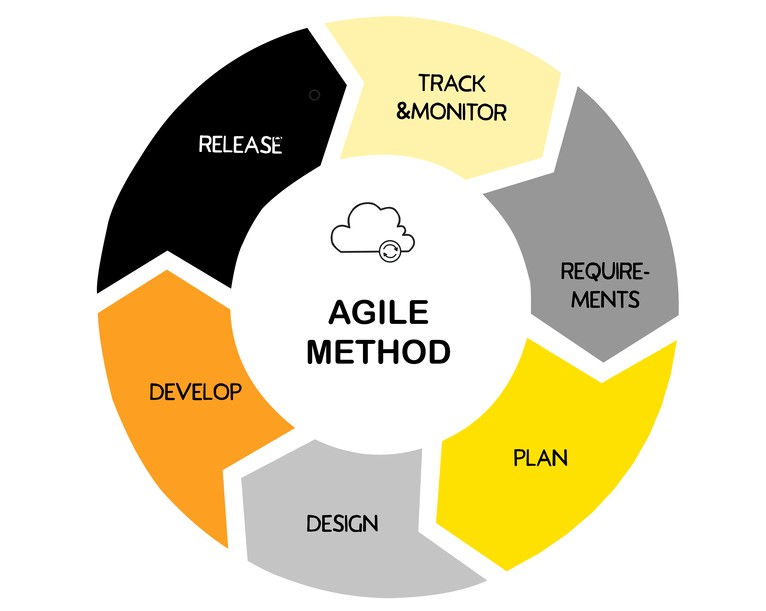8 Agile Metrics To Drive Smarter Decision-Making

Agility has redefined the way enterprises deliver value. No longer is success measured simply by meeting deadlines or staying within budget. In today’s environment, adaptability and speed define whether teams thrive or struggle. Yet agility without meaningful insight is like sailing without a compass. You may be moving quickly, but you lack direction. That is where Agile metrics matter.
Agile metrics turn raw activity into actionable intelligence. They give leaders and teams visibility into how work flows, how much value reaches customers, and how effectively processes support outcomes.
Using an Agile project tracker brings clarity to workflows. That clarity leads to smarter decisions. Instead of guessing where bottlenecks exist or relying on instinct to prioritize, decisions can be informed by data.
The Role of Agile Metrics in Modern Delivery
Agile metrics matter because they connect strategy with delivery. Every sprint, every user story, and every release carries both effort and impact.
Without measurement, teams risk focusing only on output rather than outcomes. Metrics such as velocity and cycle time highlight productivity, while business value delivered ties development directly to organizational goals. Together, these metrics form a system of feedback that fosters transparency, continuous improvement, and trust throughout the entire enterprise.
Below are eight Agile metrics that reveal how teams perform and also how organizations can improve alignment, reduce risk, and deliver value.
Velocity
Velocity measures the amount of work completed during a sprint, typically expressed in story points. Unlike hours or days, story points reflect the complexity and effort required. Velocity is a more accurate representation of team capacity.
Tracking velocity over multiple sprints produces a rolling average that stabilizes planning and provides reliable expectations for future commitments.
Velocity shines when it supports planning and forecasting rather than comparison. Teams use it to understand their sustainable pace, avoid overcommitment, and communicate capacity to stakeholders. For example, if a team consistently delivers 40 story points per sprint, leaders can plan roadmaps confidently.
Sprint Burndown Chart
The sprint burndown chart tracks the amount of work remaining in a sprint compared to the time left. With work plotted against days, the chart reveals if the team is on pace to complete its commitment. The ideal burndown line acts as a reference, while the actual progress line reflects reality.
This visual tool offers immediate insight. If progress flattens or rises, it signals blockers or scope creep. If it dips unevenly, it may reveal poor task breakdown. Yet its true strength lies in sparking dialogue.
During stand-ups or retrospectives, teams use burndown charts to spot obstacles early. This helps them adjust plans quickly and stay focused on sprint goals throughout the iteration.
Lead Time
Lead time measures the duration from when a work item is requested to when it is delivered. It includes both active work and waiting periods, making it a customer-centric metric. Shorter lead times signal faster delivery of value, while longer lead times reveal bottlenecks in the pipeline.
This metric is important because it reflects the customer’s actual experience. A feature may only take three days to build, but delays often happen after the work is done. If it waits three weeks for approval or integration, the business outcome is pushed back. Ultimately, it can reduce the value of fast development.
Cycle Time
Cycle time narrows the focus to active work. It measures the time between when a task begins and when it is completed. Unlike lead time, it filters out wait periods and external dependencies, offering a direct view into team efficiency.
Cycle time is beneficial for continuous improvement. Teams can break down large tasks into smaller ones, limit work in progress, and measure how those changes reduce cycle time.
Shorter cycle times usually lead to faster delivery of value, higher customer satisfaction, and greater adaptability. Spotify cut its average cycle time from 108 days to just 15 by working in smaller batches and applying Agile principles. This dramatic improvement highlights the power of cycle time as a metric for motivating speed and efficiency.
Cumulative Flow Diagram
The cumulative flow diagram visualizes how work items move across stages such as “to do,” “in progress,” and “done.” Each band on the chart represents a stage. Smooth, parallel bands show balance, while widening bands highlight bottlenecks.
This diagram provides a holistic view of workflow health. Teams can see if too many tasks are stuck in progress or if throughput is lagging behind demand. CFDs are indispensable for achieving stable and predictable delivery.
Throughput
Throughput measures the average number of work items completed within a specified period, typically on a weekly basis. Unlike velocity, which focuses on effort, throughput counts actual items, making it easy to communicate with stakeholders.
Tracking throughput over time reveals trends in capacity. If throughput rises steadily, it suggests improved flow and efficiency. If it drops, it signals obstacles or process inefficiencies. When paired with cycle time, throughput provides a strong foundation for forecasting delivery timelines. Leaders can use this data to set realistic expectations and allocate resources more effectively.
Escaped Defects
Escaped defects track the number of bugs or issues that are discovered after a release. This metric reflects the quality of testing and development practices. Fewer escaped defects indicate stronger quality assurance and higher trust from users.
The value of this metric lies in accountability. Teams discuss escaped defects in retrospectives, identify gaps in testing, and improve their definition of done.
Business Value Delivered
Business value delivered connects Agile work with organizational outcomes. Instead of measuring only what was built, it evaluates the impact of features on revenue, efficiency, or customer satisfaction. This directs the focus from output to outcome.
For example, Intuit tracks the percentage of tax returns completed successfully after updates, directly linking software improvements to customer success. This metric reinforces alignment by connecting daily work to larger business goals. It shows that teams are delivering real value that drives the business forward.
The Risk of Ignoring Agile Metrics
Organizations that overlook Agile metrics often struggle with hidden inefficiencies. Without tracking lead time or cycle time, delays remain invisible until they affect delivery. Without monitoring escaped defects, product quality can drop before teams even recognize a problem.
Ignoring business value delivered risks creating output that fails to move the needle for customers or the enterprise. Agile metrics serve as early warning signals, highlighting risks before they escalate into costly failures.
Smarter Decisions Through Agile Metrics
Agile metrics become powerful when they move beyond charts and reports into decision-making. Velocity informs sprint planning, burndown charts reveal sprint health, and lead time highlights systemic inefficiencies. Cumulative flow diagrams expose bottlenecks, throughput indicates capacity, and escaped defects highlight quality issues. Together, they form a framework for smarter choices at every level of the organization.
Agile project tracking software makes these insights accessible in real time. With dashboards that connect team performance to enterprise strategy, leaders no longer guess where to adjust. Enterprise Agile planning tools offer visibility across portfolios, while team management tools give squads the understanding to focus, collaborate, and adapt.
From Metrics to Meaningful Outcomes
Agility requires accountability and alignment with outcomes that matter. Agile metrics give organizations that clarity. They reveal how much value reaches customers, where processes stall, and how teams perform across every sprint and release.
At Radus Software LLC, we created Metronome to make these insights practical and powerful. Metronome is a holistic Agile project tracking software suite for scalability, reliability, and simplicity.
With Metronome, leaders gain visibility, teams gain alignment, and enterprises achieve the ability to deliver value at scale. The future of agility lies in data-driven decision-making. We invite you to take the next step. Request a demo and see how Metronome turns Agile metrics into a catalyst for smarter decisions today.



